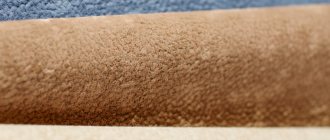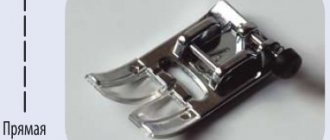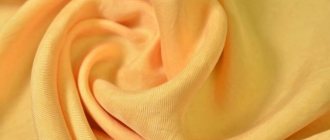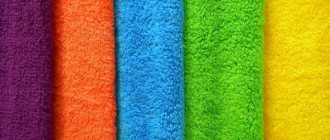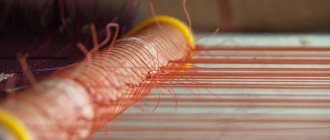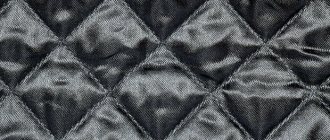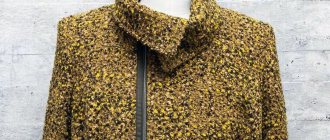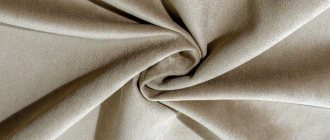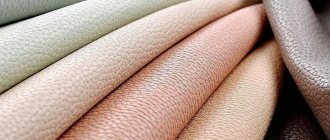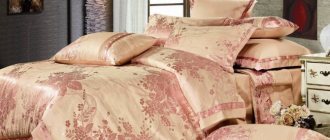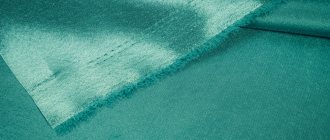Home / Blended fabrics
Back
Published: 01/28/2021
Reading time: 3 min
0
656
Polyester is one of the most popular materials, but not in its pure form. Its various combinations are much more popular. One of them is polyester + elastane - a duo that is comfortable to wear. Let's consider the features of the components individually, as well as in mixtures, advantages and disadvantages, areas of use, care rules, and typical consumer reviews.
- 1 Comparison of polyester and spandex separately
- 2 Description of a mixture of two fibers 2.1 Pros and cons
- 2.2 Use and care
- 2.3 Product reviews
What is polyester
Polyester is a fabric that is 100 percent synthetic. The material is obtained from polystyrene, an oil refining product, passed under high pressure through small diameter holes.
Next, the threads are stretched to the required diameter, dyed, and intertwined in different ways. Polyester fiber was first produced in 1949.
Polyester is a synthetic material, but the material is rarely used in its pure form. During the production process, other components are often added - viscose, cotton, wool. This changes the properties of the fabric, making it softer, more breathable, and more pleasant to handle. The composition of each item is indicated on the label.
Externally, the material is similar to wool, but its characteristics resemble cotton material. High-quality fabric does not stain the skin when worn, has no odor, and does not fade when washed.
Types of fabric
The production of polyester-based fabrics is varied. Types of material:
- Micro-oil - made from spandex (polyester fibers) and viscose in a ratio of 7 to 3. The result is a light, soft material that does not wrinkle. Externally similar to silk. Skirts and blouses are made from this material.
- Oil - consists of viscose and a small amount of polyester fibers. Another name is knitwear. Sweatshirts, trousers and dresses are made from dense, warm material.
- Stretch - contains from 5 to 15% elastane or from 85 to 95% polyester. It stretches, returning to its previous shape. Swimwear, underwear, and tracksuits are made from it.
- Cotton, or polycotton, is a combination of synthetic and cotton threads. Makes the fabric soft, pleasant to the touch, breathable. The material is used to make bed and underwear.
- Holofiber is fluffy and retains heat well. Used for filling pillows, blankets, clothes.
- Mesh is a dense fabric that does not change shape. It is inserted into windows to protect against insects. Comes in different colors and thickness.
- Recycled polyester - created from recycled plastic products. This is a form of combating environmental pollution, as well as a way to obtain cheap material. The fabric is non-degradable. Tracksuits are often made from it. Things made of plastic are also produced by well-known world-famous companies.
Based on density and strength, they are distinguished:
- 300d – waterproof, material for sports equipment;
- 500d – make tents, backpacks, covers for covering cars;
- polyester 600d – durable, used in the manufacture of equipment for climbers;
- 900d - used for protection against ultraviolet radiation and water in extreme conditions.
What is polyester made of and features of its production
So that you understand that you have nothing to fear, we will tell you the entire process of polyester production.
The first step here will be the construction of starting materials from oil and gas. After this, polystyrene is released, from which, after several chemical procedures, polyester is made. At first, the polymer is very flexible, which allows you to create fibers of the desired thickness and length. It all ends with an interweaving of threads. It is at this stage that fibers from other fabrics are added, giving each fabric its own personal touch.
So why are petroleum products added here?
They are the ones who hold the ingredients together and provide the clothes with the necessary properties. By the way, many designers, caring about nature, use recycled polyester in their products. This fabric is a product of recycled plastic bottles and can be found very often in sportswear.
Advantages and disadvantages of the material
Positive qualities of the fabric:
- With proper care, things do not stretch. Adding wool or viscose makes the product more elastic, and after the cessation of exposure it returns to its original form.
- It is highly waterproof, and, thanks to the weaving of other types of threads, air passes through it - modern polyester breathes.
- Due to the density of the threads, things are resistant to stains. Wash well in warm and cool water, dry quickly.
- It's warm in such clothes. It protects from the wind.
- Doesn't roll down. Constant use and frequent washing do not affect the smoothness of the surface.
- When dried properly, it practically does not wrinkle. Easy to smooth out.
- By dyeing you can get any color. The fabrics do not fade.
- They don't eat insects. Things can be stored without fear of moths.
- Affordable.
In what weather is it convenient to wear polyester:
- windy;
- raw;
- cold.
In the summer, things that are specifically designed for this purpose are suitable for wearing - swimsuits, swimming trunks.
Cons of polyester:
- At temperatures above 40 °C, the threads begin to break down. Boiling quickly renders the item unusable.
- Friction and twists lead to deformation of the material. Hand washing and spinning are carried out in a gentle mode.
- Failure to comply with the temperature conditions when washing or ironing leads to the fact that the products lose their shape.
- Electrified. To remove static electricity, use an antistatic agent or conditioner.
- The original material is hard, the fabric is softened by the addition of fibers. The more polyester a product contains, the higher the likelihood of chafing the skin.
- Poor quality material can be harmful - cause allergies, cause excessive sweating. Not suitable for wearing in hot weather due to its density - polyester is hot in the summer.
- The material is a fire hazard - it ignites easily.
Watch the TED talk:
Pros and cons of polyester
Like any synthetic material, polyester has a number of advantages:
- waterproof;.
- absence of pellets;
- strength and durability;
Cons of polyester:
- polyester clothing is too thick, which can lead to some discomfort in hot weather;
- You cannot use dry cleaning services;
- Synthetics accumulate static, which is why dust particles sometimes stick to clothes. But all this is easily leveled out with special antistatic powders and conditioners.
- rigidity of the material. Often elastane and cotton are added to make it softer.
If the manufacturer violates the production technology, then you will be allergic to one or another item of clothing. Therefore, do not be tempted by the too low price of the product - you are saving on your health.
Comparison with other materials
In addition to polyester, other synthetic materials are also produced. What is the difference between polyamide fabric and polyester:
- different starting chemicals;
- allows water to pass through;
- easily torn, damaged when stretched.
Pantyhose, stockings, fishing nets, and ropes are made from polyamide.
Comparison of nylon and polyester:
- differ in chemical composition;
- both are light, durable, cheap;
- nylon shines, is poorly breathable, and is exposed to UV rays.
Polyamide or elastane: which is better?
Modern solutions
Polyamide is initially a material with a rough surface, but it can also be smooth. It allows air to pass through and can change shape depending on the body. Completely protected from biological influences.
Polyester offers other benefits as well. It has low hygroscopicity and elasticity.
Outperforms existing analogues in terms of strength and ability to be painted. It is practically not used in its pure form, but if it is possible to choose, polyamide will be the optimal solution. The only negative feature is the high prices. What the lavsan and polyester options do not provide is whether they are the same thing or not - the buyer decides.
Areas of application of polyester
The combination of positive properties makes the fabric in demand in many areas. Polyester is a fabric for sewing curtains of any density, length, width and with a variety of patterns. With their help you can change the interior:
- make the kitchen more spacious by using fabrics in light shades;
- prevent water droplets from splashing in the bathroom;
- decorate an outdoor gazebo, protecting its space from the wind.
Bed linen wears out less, retains bright colors for a long time, but becomes electrified. Clothes made of polyester come in a variety of shapes and colors; it is easy to make arrows and curly creases on them using an iron.
Other uses of polyester:
- diapers;
- bed sheets;
- outerwear - jackets, down jackets;
- underwear;
- ship linens;
- workwear;
- tents.
Synthetic fibers are used as filler for mattresses, insulation for winter jackets, down jackets, coats and shoes.
Does polyester shrink after washing?
In many ways, washing products that contain polyester fiber depends on the percentage of other fabrics present. When washed, 100% polyester practically does not shrink, but when the products contain other fibers, especially natural ones, the item can shrink significantly.
To prevent polyester clothing from shrinking and losing its original appearance, you must follow the care instructions on the label.
Clothes should be washed at a water temperature no higher than 40°C, regardless of the type of washing: machine or hand. For black and colored items, it is preferable to use detergents for colored items.
It is advisable to add conditioner when rinsing. It will make things softer and less electrified.
Fabric care
Due to the peculiarity of the chemical composition, polyester requires compliance with the rules of care. The fabric should not be exposed to high temperatures, boiled, rubbed vigorously, or twisted when squeezing.
Repairing synthetic clothing has its own characteristics - the edges of the tear are not sewn up, but glued together. The adhesive for fixing the polyester is non-woven fabric. It is applied to a dry fabric surface and ironed on top with a hot iron through gauze.
Removing a tie from a polyester dress is simple - just pull the fabric in different directions, straightening it.
The material washes well, but difficult stains take longer. Here's how to remove paint from polyester clothing:
- Rinse the area of contamination with cold water as soon as possible;
- wipe with a solvent such as “Alcohol White” from the wrong side.
To remove old paint stains, apply turpentine, dishwashing detergent, laundry soap, kerosene, and refined gasoline. You can try scraping off the dirt with a knife blade.
To remove paint from a jacket, you need:
- Spot-treat the stain with warm alcohol. Wash the product.
- Mix 1 tbsp. l. 9% vinegar, dishwashing detergent, 150 g washing powder, 0.5 l of water. Apply to the stain and scrub with an old toothbrush. Wash the item.
You can remove a greasy stain from polyester clothing as follows:
- Rub with laundry soap. Wash off after 30 minutes.
- Apply a thick layer of dishwashing detergent and lather. Wash after 20 minutes.
- Sprinkle with a thick layer of salt and lightly rub it into a cloth with your fingers. Shake off after 10 minutes and wash.
If necessary, you can refresh the item by painting it:
- soak for 30 minutes in water;
- the next day, rinse in water with the addition of ammonia;
- Apply solvent paint strictly according to the instructions (polyester is capricious when it comes to dyeing).
The material can not only be painted, but also bleached. To do this, immerse the stain or yellowed item in a solution of 2 liters of warm water and 2 tbsp. l. hydrogen peroxide with a concentration of 3%. Keep for 20 minutes, then rinse. Do not use chlorine-based bleaches.
Washing and drying
Polyester products can be washed by hand or using an automatic washing machine, following the label. In case 1, do this:
- powder or soap is dissolved in water at a temperature of 35–40 °C;
- soak the item for 30 minutes;
- wash without sudden movements or strong friction;
- dirt is wiped with a rag, a brush is not used;
- rinse in water;
- lightly squeeze.
To get rid of odors, leave things in water for half an hour with the addition of conditioner.
Drying:
- large ones - left to drain on the sides of the bathtub;
- Light items are hung on hangers.
Rules for washing in a washing machine:
- Water temperature is about 40 °C. Number of revolutions – up to 800.
- Modes – “synthetics”, “mixed”, “daily synthetics”, “quick wash”, “colored fabrics”, “delicate fabrics”.
- Clothes are turned inside out. Locks and buttons are fastened.
- Separate loading is desirable - dark products separately from light ones. This will help prevent staining.
To watch the video review:
How to iron material
Polyester items do not require ironing - they straighten when dried. If necessary, large items are ironed at a minimum temperature. This helps prevent damage to the fabric fibers.
How to iron a synthetic jacket:
- set the iron to “synthetic” mode or the lowest temperature;
- moisten gauze with water and squeeze;
- put it on the thing;
- hold the iron with pressure;
- hang on hangers.
Video about washing fabric in a machine:
Reviews
Convenient solution
Valery, 30 years old, Moscow: “I like modern synthetic materials. The main thing is that they keep their shape for a long time, which is especially important for me. After several washes it still looks like new. In bad weather it also behaves quite well. I often buy suits made of polyester and polyamide, and they have never let me down.”
Vika, 27 years old, Perm: “I have always liked any combination with elastane. They are not only easy to care for and wash. Such things easily bend to the shape of the body. And they do not cause discomfort. I don’t know, I often like the feel of synthetic materials more than natural ones. And they last longer. Each item is several years old.”
Natalya, 35 years old, Samara: “I agree, elastane in many cases is a real salvation. Polyester and polyamide are also quite good choices. The main thing is not to turn on too high a temperature when washing. Then everything will be fine with fabrics and things.”
Measurement
It is difficult to imagine modern clothing production without synthetic materials in various proportions. Without the use of such solutions, clothing turns into a piece of fabric that cannot be used in any way. Synthetics add stretchability and make the materials more pleasant to the touch.
Manufacturing
Polyester is made from a material called polyamide. It is a plastic produced from synthetic high-molecular compounds. The first synthetic polyamide was produced in 1862. But mass production of synthetic material began only in the middle of the 20th century. At first, various packaging products, adhesive tape, bags and containers for storing products were made from polyester.
The unique chemical composition, low cost and practicality of use have made such material as polyester very popular. All countries of the world soon found out what kind of fabric it was. Curtains, pillowcases, underwear, tablecloths, and draperies began to be sewn en masse from this material. Even carpets and upholstery for upholstered furniture began to be made from polyester.
At the moment, polyester fabric is in great demand and is used in many industries.
Summary
In general, synthetic polyester fibers are rated quite highly. Today, fabrics made from this attractive material are quite in demand, so they are often found on the market. Users of polyester products note high performance and aesthetic characteristics: these items last a long time, can easily withstand different temperatures and weather conditions, do not shrink, do not need ironing, and do not pill. Adding polyester fibers to blended fabrics is a popular practice that improves the existing positive properties and also corrects the weak points of natural threads. Polyester makes such fabrics durable, wrinkle-resistant and wear-resistant. Still, it is worth remembering the disadvantages of synthetic fibers and making a decision based on the existing pros and cons.
Recommendations for care and washing
Synthetic fabric made from polyester fibers is completely easy to care for. They can be easily washed and do not require any complex manipulations. However, in order to extend the life of the product or maintain the appearance as presentable as possible, we recommend listening to certain advice from manufacturers:
- Yes, polyester tolerates different temperature conditions well. But still, the optimal water for washing should not be too hot. Recommended temperature is 40 degrees.
- Try not to use the automatic spin cycle of your washing machine. It is better to remove excess moisture from the fabric manually.
- Purchase special powders for this type of fabric. Do not use bleach or other aggressive products, such as powders containing chlorine. Also, do not resort to dry cleaning of the canvas.
- Since polyester fabrics are not prone to wrinkles, they do not need to be ironed. But if such a need arises, choose the delicate ironing mode.
Properties of polyester fabric
Polyester fabric has the following properties:
- high strength;
- greater wear resistance compared to natural fabrics;
- high resistance to ultraviolet rays and heat;
- does not wrinkle;
- retains its shape perfectly;
- easy to wash and dry quickly;
- does not require special care.
Polyester combined with other fibers
Polyester is combined with other fibers, which allows you to experiment with new fabrics and change properties. The inclusion of polyethylene in any composition gives the material elasticity and wear resistance. It wrinkles little and retains its original shape and color saturation for a long time. If you add polyester to cotton and viscose, the strength will increase significantly and it will become almost impossible to tear the fabric, and the risk of shrinkage during washing will be minimized.
With viscose
Adding fiber to viscose increases the elasticity, strength and wear resistance of the fabric. The color retains its brightness longer. A common formula of 30% viscose and 70% polyester is used for tailoring. The material is called polyviscose.
With lycra, elastane or spandex
Lycra, elastane and spandex are the same fiber, the difference between them is in the name of the brand. In different countries, the material is called by some other names.
Polyester and lycra fabric with a glossy surface has multi-directional stretch. It does not create a greenhouse effect and does not wrinkle. An example of a successful combination of fibers is an elegant micro-oil fabric for summer clothes.
A common combination is polyester 85-95% and elastane 15-5%. This fabric is elastic, smooth and has excellent stretch. Suitable for underwear, swimwear and sportswear.
Polyester yarn is popular among craftswomen for knitting pullovers, sweaters, scarves and hats. The products have thermal conductivity, wear well, are warm, comfortable and easy to care for.
The union of two fibers produces fabric for sportswear, hosiery, gloves and various knitwear. Due to spandex, the fabric becomes denser, elastic and breathable. However, it is susceptible to inflammation, and light shades quickly turn yellow.
Materials: supplex, neoprene, oil.
With clap
The material manages to combine the naturalness and hygiene of cotton with the wear resistance and strength of polyester. The fabric is not subject to fading, creasing, ignition and lacks elasticity. It is used for sewing bed linen that lasts a long time and does not wrinkle.
With wool
The composition of polyester with wool has already become a classic (45/55%). Outerwear and suits are made from it.
With polyamide
In combination with polyamide, durable and elastic fabrics are obtained that are not subject to wear. They look attractive, soft and pleasant to the skin. Disadvantage: tendency to become electrified.

